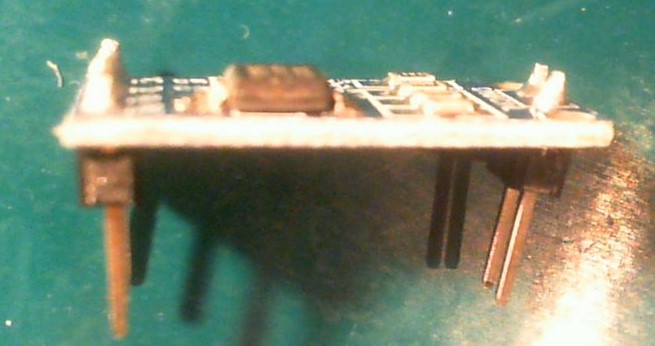I bought different type of CAN transceivers: Two with an CJMCU2551 (left in the picture below). and four with TJA1050 (right in the picture below).
CJMCU2551 (left) has pins: VCC, GND, CTX, CRX, CANH, CANL, chip: MCP2551I (I think last is an I), written on back: CJMCU-2551
TJA1050 (right) has pins: VCC, GND, TX, RX, CANH, CANL (thus the same), chip: TJA 1050, written on back: LC Technology, www.lctech-inc.com
I have the feeling these are similar, although I see some difference, like the TJA1050 has an 120 ohm (terminator) resistor, but the MCU2551 has not.
Question 1: Are they interchangeable or not? (and if not, what should I take into account, like adding a 120 ohm resistor?)
I soldered pin headers to the pin holes, and I found out that all are not with 90 degrees angle. For the MCU2551 this was my own fault (I probably pressed to hard on the soldering iron so the angle is less than 90 degrees).
However, for the TJA1050 I could put both ends on a breadboard and the only way it fitted was like this: but when I took them out I saw the pins are in an angle.
Question 2: Why aren't the pins made in such a way both row ends (VCC, TX, RX, GND and CANL, CANH) fit in a breadboard with 90 degrees angle? (see pic below)
(I want to use them for STM32 (STM32F103C8T6 and STM32F407VET6) which all have CAN supported by GPIO pins).


